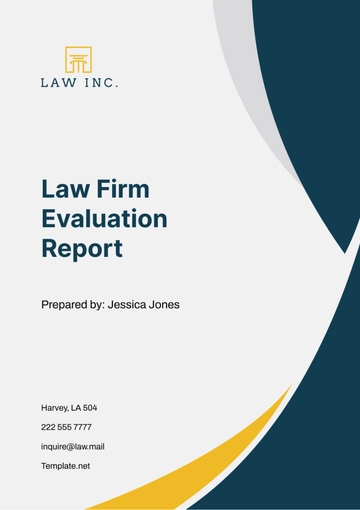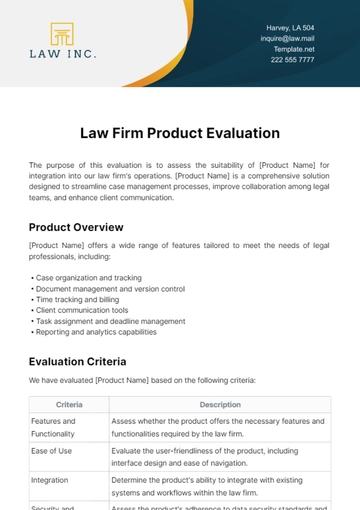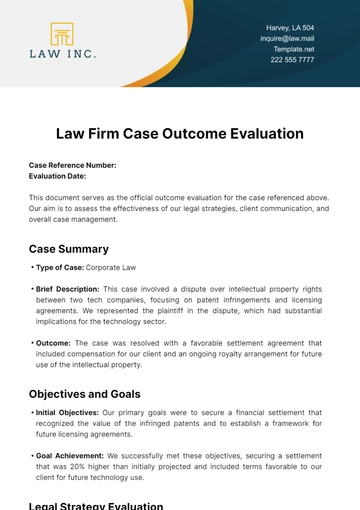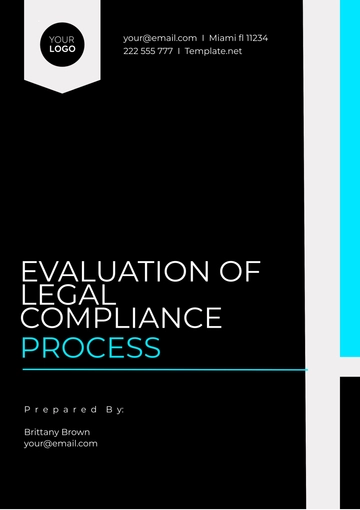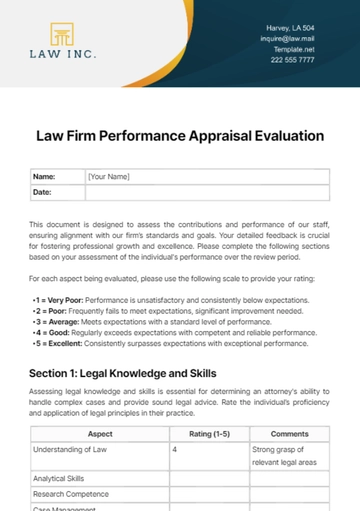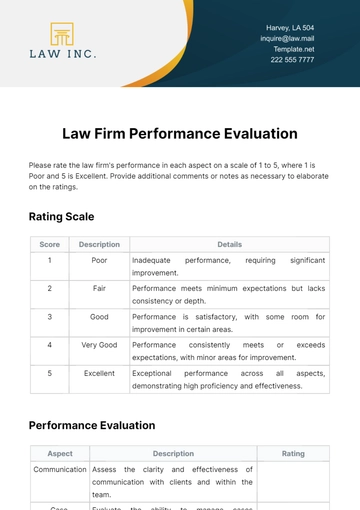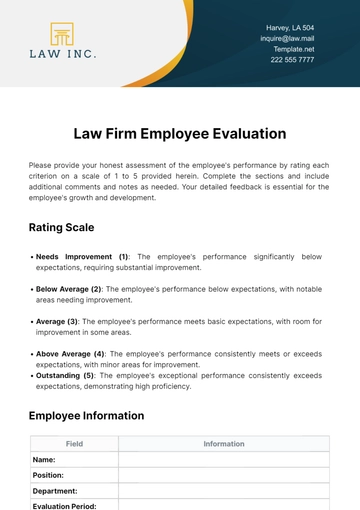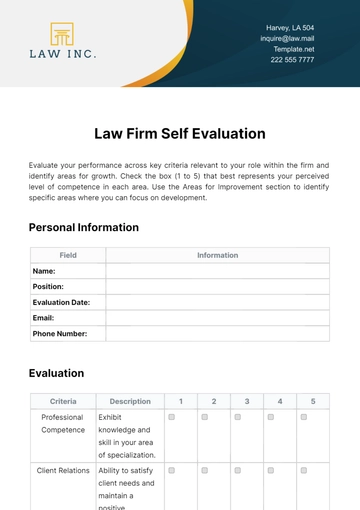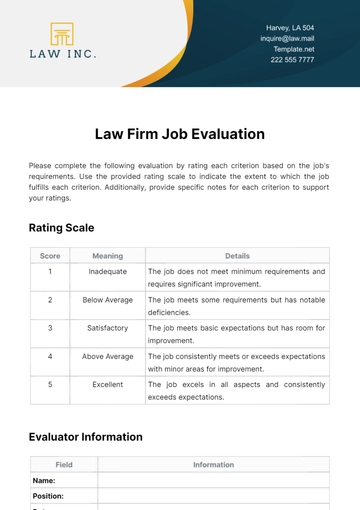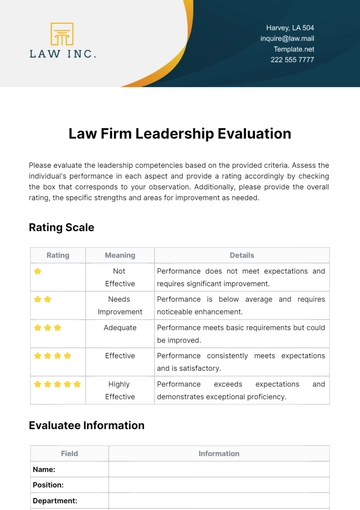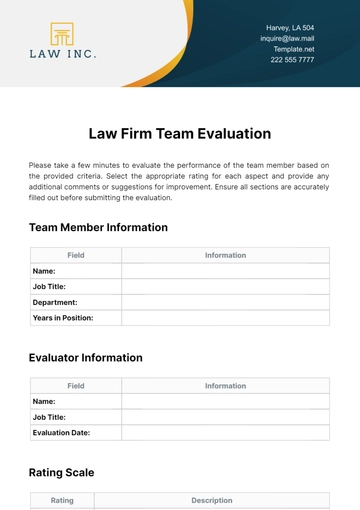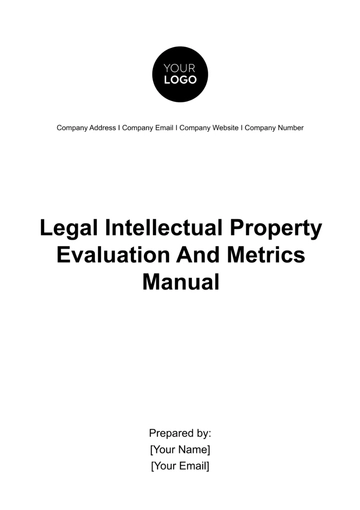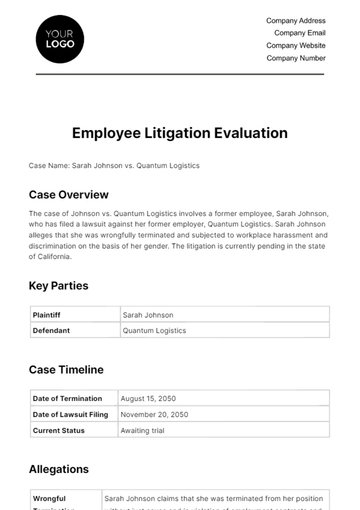Free Legal Intellectual Property Evaluation and Metrics Manual
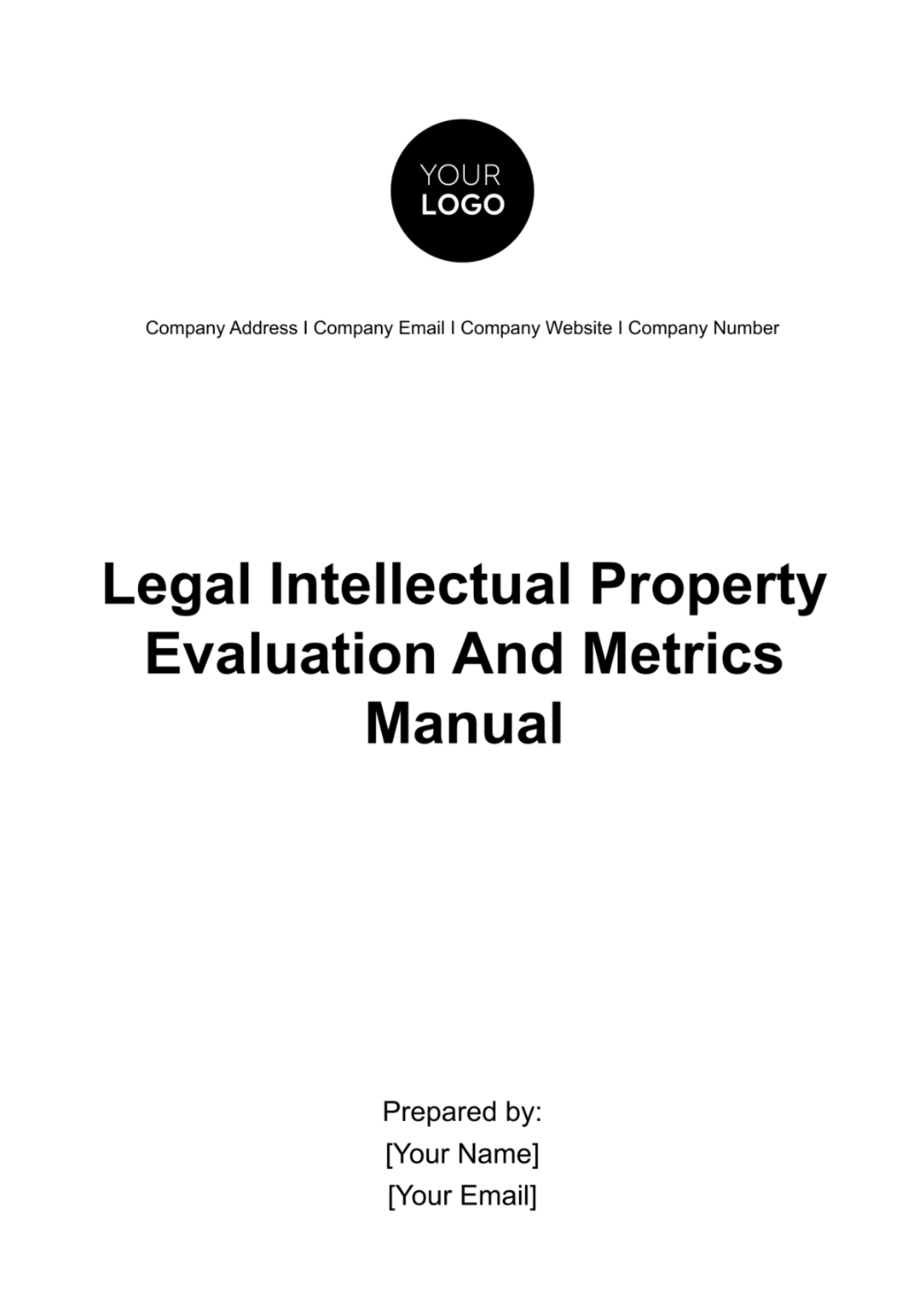
I. Introduction
Welcome to the Legal Intellectual Property Evaluation and Metrics Manual. This comprehensive guide is designed to assist professionals in the evaluation and measurement of intellectual property (IP) assets within the legal framework. In today's knowledge-based economy, intellectual property plays a crucial role in driving innovation, competitiveness, and value creation for organizations. Therefore, understanding the methods and metrics for evaluating IP assets is essential for making informed business decisions and protecting intellectual property rights.
This manual provides a systematic approach to IP evaluation, offering a structured framework, evaluation process, and metrics for assessing the value, potential, and risk associated with various types of intellectual property. By following the guidelines outlined in this manual, stakeholders can effectively evaluate, manage, and leverage their intellectual property assets to achieve strategic objectives and maximize their competitive advantage in the marketplace.
II. Purpose of the Manual
The purpose of this manual is to serve as a comprehensive resource for professionals involved in intellectual property management, legal counsel, corporate strategy, finance, and technology transfer. The manual aims to:
Provide a clear understanding of the importance of intellectual property evaluation and metrics within the legal context.
Offer guidance on establishing a structured framework and process for evaluating intellectual property assets.
Define key concepts, terminology, and methodologies related to intellectual property evaluation.
Present a range of quantitative and qualitative metrics for assessing the value, potential, and risk of intellectual property assets.
Facilitate the development of evaluation reports and documentation that comply with legal and regulatory requirements.
Introduce an intellectual property metrics dashboard for tracking and visualizing key evaluation metrics.
Through a combination of theoretical insights, practical guidelines, and illustrative examples, this manual equips professionals with the knowledge and tools necessary to conduct effective intellectual property evaluations, make informed decisions, and optimize the value of their intellectual property portfolios.
III. Legal Intellectual Property Evaluation Framework
In the Legal Intellectual Property Evaluation Framework, we establish the foundational elements necessary for effective evaluation of intellectual property assets within the legal context. This section provides definitions of key terms and concepts essential for understanding the evaluation process and lays the groundwork for subsequent sections.
A. Definitions
Term | Definition |
|---|---|
Intellectual Property (IP) | Intellectual property refers to creations of the mind, such as inventions, literary and artistic works, designs, symbols, names, and images used in commerce. These creations are protected by patents, copyrights, trademarks, trade secrets, or other forms of intellectual property rights. |
Evaluation | Evaluation in the context of intellectual property refers to the systematic assessment of the value, potential, and risk associated with intellectual property assets. It involves analyzing various factors to determine the significance and worth of intellectual property rights. |
Metrics | Metrics are measurable indicators used to assess the performance, value, or quality of intellectual property assets. These metrics provide quantitative or qualitative data that aid in decision-making and evaluation processes. |
B. Key Concepts
IP Rights: Intellectual property rights encompass a range of legal protections granted to creators and innovators to control the use and exploitation of their intellectual creations. Common types of IP rights include patents, copyrights, trademarks, and trade secrets. Understanding the different types of IP rights is essential for evaluating the scope and value of intellectual property assets.
Valuation Methods: Valuation methods are techniques used to determine the monetary worth of intellectual property assets. These methods include market-based approaches, income-based approaches, and cost-based approaches. By applying appropriate valuation methods, stakeholders can assess the economic value of intellectual property rights and make informed decisions regarding their management and commercialization.
Risk Assessment: Risk assessment involves identifying and evaluating potential risks associated with intellectual property assets. These risks may include infringement risks, market risks, regulatory risks, and technological risks. By conducting thorough risk assessments, stakeholders can mitigate potential threats and safeguard the value of their intellectual property portfolios.
IV. Intellectual Property Evaluation Process
The Intellectual Property Evaluation Process outlines the systematic approach for assessing the value, potential, and risk of intellectual property assets. This process encompasses various stages, from initial assessment to detailed evaluation and analysis, and involves the application of appropriate methodologies and metrics.
A. Initial Assessment
The initial assessment stage involves preliminary review and identification of intellectual property assets. During this stage, stakeholders gather relevant information about the IP portfolio, assess its strategic importance, and identify potential areas of focus for further evaluation. The initial assessment helps determine the scope and objectives of the evaluation process and lays the groundwork for subsequent activities.
B. Detailed Evaluation
The detailed evaluation stage involves in-depth analysis and due diligence to assess the value, potential, and risk associated with intellectual property assets. This stage may include comprehensive examination of IP rights, market analysis, competitive benchmarking, technology assessment, and legal review. By conducting detailed evaluations, stakeholders gain deeper insights into the strengths, weaknesses, opportunities, and threats of their intellectual property portfolios.
C. Metrics and Analysis
The metrics and analysis stage involves quantifying and analyzing key evaluation metrics to assess the performance, value, and quality of intellectual property assets. This stage may include the application of quantitative metrics, such as market value, revenue potential, and cost savings, as well as qualitative metrics, such as innovation potential, market position, and brand reputation. By analyzing these metrics, stakeholders can evaluate the effectiveness of their IP strategies, identify areas for improvement, and make data-driven decisions to optimize the value of their intellectual property portfolios.
V. Metrics for Intellectual Property Evaluation
Metrics play a crucial role in the evaluation of intellectual property assets, providing measurable indicators to assess their value, potential, and risk. In this section, we explore various quantitative and qualitative metrics commonly used in intellectual property evaluation, along with their significance and application.
A. Quantitative Metrics
Metric | Description |
|---|---|
Market Value | Market value is the monetary worth of intellectual property assets determined based on their market demand, sales comparable, and financial projections. It reflects the price that a willing buyer would pay to acquire the IP rights in the open market. Market value provides a benchmark for assessing the economic value and investment potential of intellectual property assets. |
Revenue Potential | Revenue potential measures the expected income or revenue generation capability of intellectual property assets over a specific period. It considers factors such as licensing opportunities, royalty streams, product sales, and cost savings attributable to the IP rights. Revenue potential helps stakeholders evaluate the commercial viability and income-generating capacity of their intellectual property portfolios. |
Cost Savings | Cost savings represent the financial benefits derived from using intellectual property assets to reduce costs, increase efficiency, or improve productivity within an organization. It includes savings associated with avoiding infringement claims, streamlining operations, and leveraging proprietary technologies or processes. Cost savings metrics help quantify the tangible benefits of intellectual property assets in driving operational efficiency and reducing business risks. |
B. Qualitative Metrics
Metric | Description |
|---|---|
Innovation Potential | Innovation potential assesses the capacity of intellectual property assets to drive innovation, foster creativity, and generate novel solutions to industry challenges. It considers factors such as the novelty, uniqueness, and technological advancement of the IP rights, as well as their potential to disrupt markets and create competitive advantages. Innovation potential metrics help stakeholders identify valuable intellectual property assets with significant innovation potential and prioritize resource allocation for their development and commercialization. |
Market Position | Market position evaluates the competitive positioning of intellectual property assets within their respective markets and industries. It examines factors such as market share, brand recognition, customer perception, and competitive differentiation relative to rival offerings. Market position metrics help stakeholders assess the strength of their intellectual property portfolios in capturing market opportunities, defending against competitive threats, and sustaining long-term growth and profitability. |
Brand Reputation | Brand reputation measures the public perception, trust, and goodwill associated with intellectual property assets and their associated brands or trademarks. It encompasses factors such as brand awareness, brand loyalty, consumer sentiment, and corporate reputation. Brand reputation metrics help stakeholders gauge the strength of their brands in attracting customers, driving brand loyalty, and enhancing overall business value. |
VI. Reporting and Documentation
Effective reporting and documentation are essential components of the intellectual property evaluation process, enabling stakeholders to communicate evaluation findings, support decision-making, and comply with legal and regulatory requirements. In this section, we outline the structure and standards for reporting evaluation results and documenting the evaluation process.
A. Evaluation Report Structure
The evaluation report should follow a structured format to ensure clarity, coherence, and completeness in presenting evaluation findings. The report structure typically includes the following sections:
Executive Summary: A concise summary of the evaluation objectives, methodology, key findings, and recommendations.
Methodology: Description of the evaluation approach, criteria, data sources, and analytical techniques used in the evaluation process.
Findings and Analysis: Detailed presentation of evaluation results, including quantitative and qualitative metrics, analysis of IP strengths and weaknesses, and assessment of risks and opportunities.
Conclusion and Recommendations: Summary of key insights, conclusions drawn from the evaluation findings, and actionable recommendations for stakeholders.
B. Documentation Standards
Documentation standards ensure consistency, accuracy, and transparency in recording evaluation activities and outcomes. Key considerations for documentation include:
Documentation Requirements: Identification of essential documents, records, and artifacts generated throughout the evaluation process, such as evaluation forms, data sources, analysis reports, and legal documents.
Compliance Standards: Adherence to legal and regulatory requirements governing intellectual property evaluation, including confidentiality, data privacy, intellectual property rights, and disclosure obligations.
VII. Intellectual Property Metrics Dashboard
The Intellectual Property Metrics Dashboard serves as a dynamic tool for stakeholders to track and visualize key evaluation metrics related to intellectual property assets. By presenting relevant data in a user-friendly format, the dashboard facilitates data-driven decision-making, performance monitoring, and strategic planning. In this section, we outline the components of the IP metrics dashboard and provide guidance on data visualization techniques.
A. Dashboard Components
The IP metrics dashboard comprises several key components designed to provide stakeholders with a comprehensive overview of intellectual property performance and value. These components include:
Component | Description |
|---|---|
Key Performance Indicators (KPIs) | KPIs are measurable metrics that reflect the performance, value, and quality of intellectual property assets. These metrics serve as key indicators of success and help stakeholders assess the effectiveness of their IP strategies and initiatives. Examples of KPIs include market value, revenue generated from IP assets, number of patents filed or granted, and licensing revenue. |
Visualization Tools | Visualization tools such as charts, graphs, and tables are used to present data in a visually engaging and easy-to-understand format. These tools enable stakeholders to analyze trends, patterns, and relationships within the data more effectively. Common types of visualizations used in IP metrics dashboards include line charts, bar charts, pie charts, and heat maps. |
Data Filters and Drill-Downs | Data filters and drill-downs allow users to customize their dashboard views by selecting specific criteria or parameters of interest. Users can filter data by time period, IP asset type, geographic region, or other relevant dimensions to focus on specific subsets of information. Drill-down functionality enables users to explore detailed data at a more granular level by navigating through hierarchical layers of information. |
Alerts and Notifications | Alerts and notifications provide real-time updates and notifications to stakeholders regarding significant changes, events, or trends related to intellectual property assets. These alerts help stakeholders stay informed about critical developments and take timely action when necessary to address emerging issues or opportunities. |
B. Data Visualization
Effective data visualization is essential for conveying complex information in a clear, intuitive, and compelling manner. In designing the IP metrics dashboard, stakeholders should consider the following data visualization techniques:
Line Charts: Line charts are useful for displaying trends and patterns over time, such as changes in market value, revenue, or patent filings. They allow stakeholders to visualize trends, identify anomalies, and make predictions based on historical data.
Bar Charts: Bar charts are ideal for comparing different categories or groups of data, such as revenue generated from different types of IP assets or licensing revenue from different geographic regions. They provide a visual representation of relative performance and highlight areas of strength or opportunity.
Pie Charts: Pie charts are effective for illustrating the distribution of data across various categories or segments, such as the proportion of IP assets by type (patents, trademarks, copyrights) or the distribution of licensing revenue by product category. They help stakeholders understand the composition of the data and identify dominant or minority segments.
Heat Maps: Heat maps are useful for visualizing geographic data or spatial relationships, such as the distribution of patent filings or licensing revenue across different regions or countries. They provide a color-coded representation of data density or intensity, allowing stakeholders to identify hotspots, clusters, or trends.
By leveraging these data visualization techniques, stakeholders can create an IP metrics dashboard that effectively communicates key insights, trends, and performance metrics related to intellectual property assets, empowering informed decision-making and strategic planning.
VIII. Intellectual Property Risk Management
Intellectual Property Risk Management is crucial for safeguarding intellectual property assets and mitigating potential threats and vulnerabilities. This section outlines strategies and best practices for identifying, assessing, and managing risks related to intellectual property rights.
A. Risk Identification
Internal Risks: Identify risks arising from within the organization, such as inadequate IP protection measures, insufficient employee awareness, or lack of compliance with IP policies and procedures.
External Risks: Identify risks stemming from external factors, such as infringement claims, competitive threats, changes in regulatory landscape, or technological advancements impacting the value of intellectual property assets.
B. Risk Assessment and Mitigation
Risk Assessment: Evaluate the likelihood and potential impact of identified risks on intellectual property assets using qualitative and quantitative analysis techniques.
Risk Mitigation: Develop and implement risk mitigation strategies to address identified risks, such as enhancing IP protection measures, implementing employee training programs, conducting regular IP audits, and establishing contingency plans for managing legal disputes or enforcement actions.
IX. Intellectual Property Portfolio Optimization
Intellectual Property Portfolio Optimization focuses on maximizing the value and strategic alignment of intellectual property assets with organizational goals and objectives. This section explores strategies for portfolio optimization and portfolio management techniques to enhance competitiveness and drive innovation.
A. Portfolio Analysis
Asset Prioritization: Evaluate intellectual property assets based on their strategic importance, market relevance, revenue potential, and alignment with organizational objectives.
Portfolio Diversification: Assess the diversity and balance of the intellectual property portfolio across different asset types, industries, geographic regions, and technology domains to minimize risk and maximize opportunity.
B. Portfolio Enhancement
IP Acquisition and Development: Identify opportunities for acquiring new intellectual property assets through partnerships, collaborations, licensing agreements, or strategic acquisitions. Invest in research and development initiatives to create and enhance intellectual property assets that align with market trends and emerging technologies.
Portfolio Rationalization: Streamline and optimize the intellectual property portfolio by divesting non-core or underperforming assets, consolidating redundant rights, and reallocating resources to high-potential opportunities.
X. Conclusion
The Legal Intellectual Property Evaluation and Metrics Manual provides a comprehensive framework, methodology, and tools for evaluating intellectual property assets within the legal context. By following the guidelines outlined in this manual, stakeholders can conduct effective evaluations, assess the value and potential of their intellectual property portfolios, and make informed decisions to optimize their intellectual property strategies and maximize their competitive advantage in the marketplace. Through structured reporting, documentation, and data visualization, stakeholders can communicate evaluation findings, monitor performance, and drive strategic initiatives to protect, manage, and leverage their intellectual property assets effectively.
- 100% Customizable, free editor
- Access 1 Million+ Templates, photo’s & graphics
- Download or share as a template
- Click and replace photos, graphics, text, backgrounds
- Resize, crop, AI write & more
- Access advanced editor
Elevate your intellectual property (IP) management with our Legal Intellectual Property Evaluation and Metrics Manual Template from Template.net. This editable and customizable template empowers you to develop a robust system for assessing and measuring the effectiveness of your IP strategies. With our Ai Editor Tool, tailor the template to suit your organization's specific needs and objectives. Streamline your IP evaluation process for enhanced performance and success.

